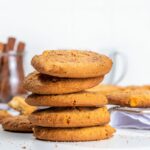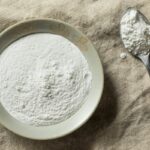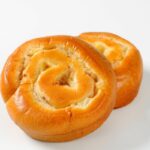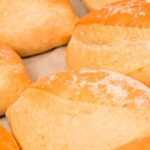If you are new to baking or just curious, you may wonder how much baking powder per cup of flour is generally needed when baking.
We’re here to answer that question and more. We take a look at baking powder and baking soda, examining their differences and introduce leavening agents you may not have heard of.
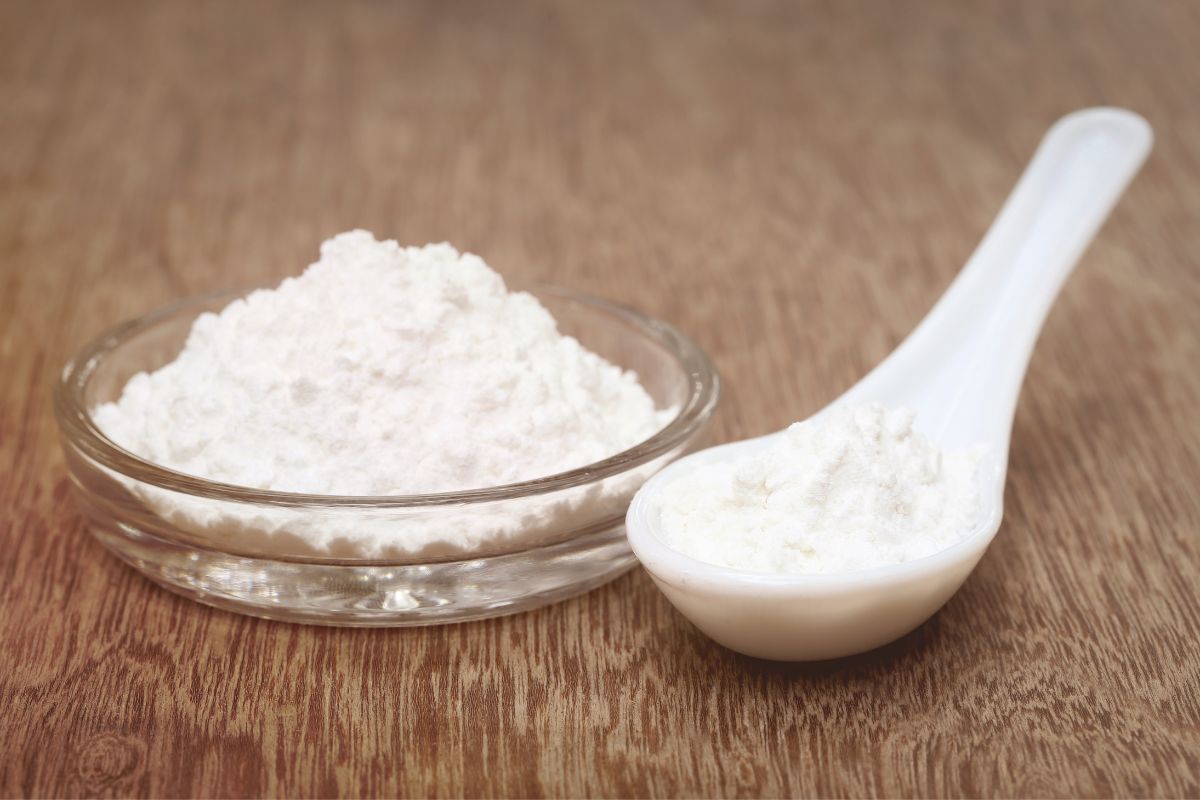
What Is Baking Powder?
Baking powder is a leavening agent used in baking and is a blend of an acid and an alkali. The acidic part of baking powder is typically cream of tartar while the alkali is often sodium bicarbonate more commonly known as baking soda.
When it is moistened and heated up, baking powder creates carbon dioxide bubbles, this is what makes it a leavening agent. In fact, it is a bit of a double agent as it begins releasing carbon dioxide as soon as it is moistened but then releases more when it gets hot.
Because baking powder contains its own acid in the cream of tartar it doesn’t require the addition of an extra acid like baking soda does.
How Much Baking Powder Per Cup Of Flour?
As a leavening agent, baking powder is not as strong as baking soda, so the general rule is for one cup of flour you should add 1 to 1 ¼ teaspoons of baking powder. As baking soda is so much stronger, you only need ¼ teaspoon of baking soda per cup of flour.
If you need a larger quantity of flour the amount of baking powder that you need to add will increase. So for three cups of flour you will need 3 to 3 ¾ teaspoons of baking powder. For baking soda the same amount of flour would require just ¾ of a teaspoon.
How Does It Differ From Baking Soda?
One of the differences between baking powder and baking soda is that baking soda is four times stronger than baking powder.
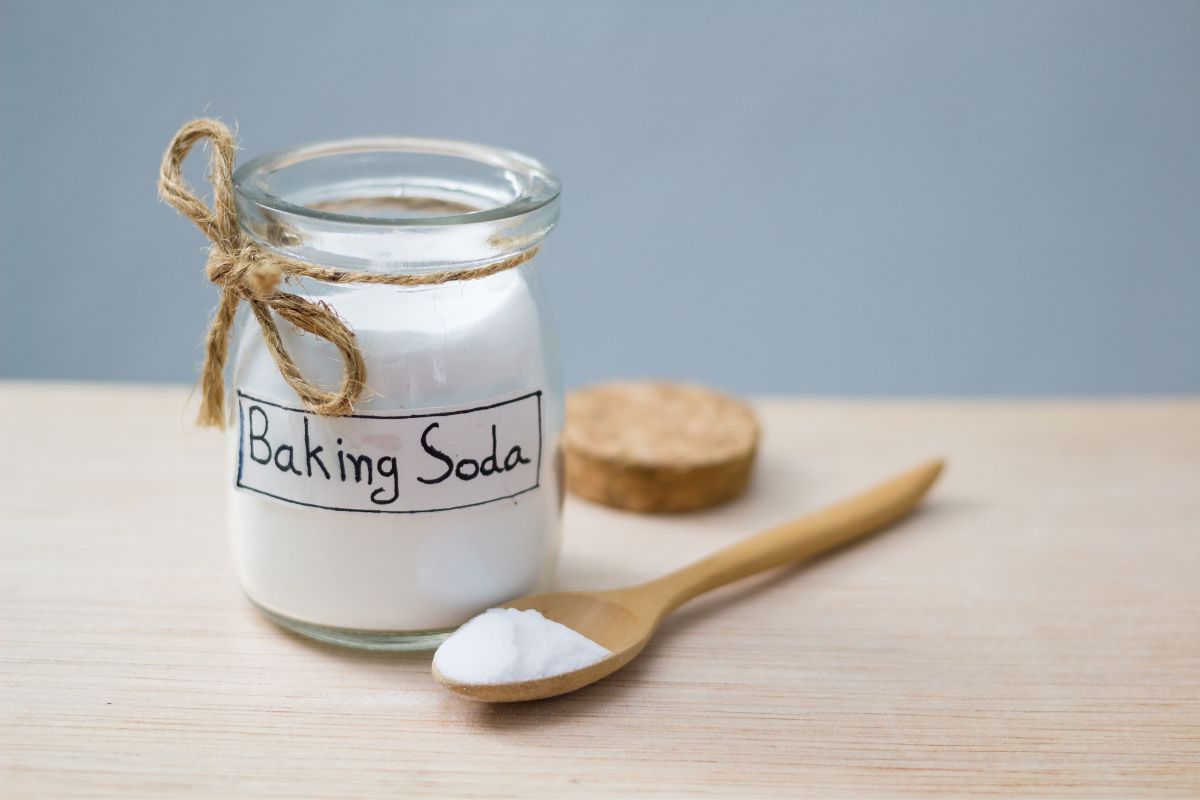
The other difference is that baking powder is a double acting leavening agent, releasing carbon dioxide bubbles when it is moistened and then again when it is heated. Baking soda releases carbon dioxide only when it is moistened and in contact with an acidic component.
Baking soda is used in recipes where there is an acidic ingredient. When baking soda is in contact with the acidic ingredient and moisture, the resulting chemical reaction produces carbon dioxide, CO2 . The reaction also produces a neutral salt and water.
Acidic ingredients can be anything, such as buttermilk honey, lemon juice or even chocolate.
Baking powder has a self contained acidic ingredient, cream of tartar, so does not need to have an external acid source to be activated. It can also contain other acids such as sodium aluminum sulfate or calcium acid phosphate.
Other Leaveners Used In Baking
Although baking powder and baking soda are the two most commonly used and well known chemical leavening agents in baking there are others.
Baker’s Ammonia
Ammonium bicarbonate or ammonium carbonate can both be used in baking as leavening agents and are more commonly known as Baker’s Ammonia. It is best used in making cookies as the flat surface allows all of the ammonia odor to disperse during baking.
Scandinavian and Germans use this leavening agent as it makes their gingerbread cookies light and crisp.
It’s not a good leavener for cake mixes however, as the ammonia that is created during cooking cannot escape and the result is a soapy and bitter tasting cake.
Cream Of Tartar
Acids play a very important role in cooking and cream of tartar is one of the best known acid ingredients in baking.
In bread making acids affect the fermentation of the yeast as well as prolonging the shelf life of the bread by using cultured wheat and acetic acid. Meanwhile, in cakes acids have an impact on the chemical leavening.
Cream of tartar is used in making meringue to help stabilize the tiny air bubbles created when beating egg whites. It also speeds up the process of making the foam.
Adding cream of tartar to snickerdoodle cookies gives them a tang and a chewy texture. It does this by preventing the sugar in the dough from crystallizing.
Making Self Rising Flour
If your recipe calls for self rising flour, but you have run out you can make a substitute quite easily and quickly.
Self rising flour is typically made with a flour that has lower protein than all purpose flour. It also has added salt and baking powder. This flour is used in recipes for quick breads, cakes, pancakes, and biscuits.
So to make self rising flour all you need just three ingredients.
- All purpose flour
- Salt
- Baking powder
Add 1 ½ teaspoons of baking powder and ¼ teaspoon of salt for every cup of all purpose flour needed for your recipe.
Mix them all together in a bowl to make sure they are well combined before using as directed in your recipe. You can scale the amount up according to your needs.
How To Store Homemade Self Rising Flour
If you wish to make a larger amount of homemade self rising flour to use at another time you will need to store it properly.
Put the flour in an airtight container, and label it with the date that you made it. Store in a cool, dry place with your other baking ingredients.
Ideally you should use your homemade self rising flour within a year. This is because the baking powder will begin to lose some of its potency when it is exposed to the other ingredients.
In Conclusion
The amount of baking powder that you should use is 1 to 1 ¼ teaspoons per cup of flour needed for your recipe. This can be increased in proportion depending on how much flour you are using.
We hope you have enjoyed reading this guide to baking powder and how it is used as well as the alternatives that are available. Happy baking!
- How To Reheat A Cheesesteak - November 5, 2023
- What Are Three Must Have Kitchen Knives? - September 22, 2023
- How To Protect Edges Of Pie Crust - June 15, 2023

